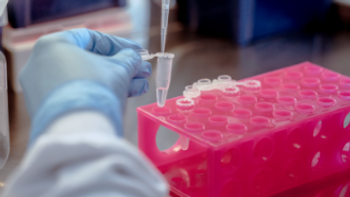
- BioPharm International-12-01-2009
- Volume 22
- Issue 12
Freeze-Thaw Performance and Robustness Assessment of Celsius FFT 6L
A case study assesses freezing time and physical robustness under stress.
ABSTRACT
This article provides data from performance and robustness studies of the Celsius FFT freeze-thaw system for the long-term frozen storage of biopharmaceutical products. In this study, gamma irradiated containers filled with 6 L of colored water solution, were frozen inside a conventional upright freezer and thawed in different conditions (ambient temperature and water bath thawing). Furthermore, frozen containers were submitted to physical challenge to assess their robustness in routine handling and accidental drops. The physical challenge tests concluded that Celsius FFT 6 L is compatible with routine handling in frozen state.
Single-use polymeric bags are successfully used for the storage of biopharmaceuticals in liquid state. Today, bags made of ethylene vinyl acetate (EVA) or low-density polyethylene (LDPE) have been found suitable for the storage and shipping of biological bulks at ambient or cold temperature (2 to 8 °C). However, problems exist in freezing applications with bags as currently configured. At low temperatures, the physical properties of plastic materials may change sufficiently to introduce brittleness that can reduce the capacity of the bag to absorb external forces, i.e., shocks without fracturing. In addition, ice volumetric expansion can cause significant mechanical stress leading to bag, port, tubing, or connector breakage. The incidence of bag damage in freezing applications has not been adequately documented in the biopharmaceutical industry. However, it is well known that current commercially available unprotected bags do not adequately protect frozen products.
(SARTORIUS STEDIM BIOTECH)
To eliminate problems related to bag breakage, Sartorius Stedim Biotech has developed the Celsius FFT concept, which combines a flexible container with a semi-rigid protective shell. The contribution of the protective shell is predominant in the absorption of stresses resulting from processing or handling conditions. Container integrity is maintained throughout its use cycle by providing appropriate support to the bag, by shielding the connectors and ports from impact, and by providing organized and safe tubing stowage.
In addition, the Celsius FFT system is compatible with standard laboratory equipment, facilitating its implementation in existing facilities and eliminating the high capital costs associated with specialized technologies.
Large-scale freezing of liquid in standard laboratory equipment is generally a slow process because of the limiting cooling capacity of the freezing equipment, the low heat transfer coefficient, and the large freezing distance of the container. To circumvent these effects, the Celsius FFT system uses multiple small containers (e.g., 6 L) with a large external surface-to-volume ratio and specific design features to maximize heat transfer.
The objective of this study was to evaluate the freeze-thaw performance of Celsius FFT and to demonstrate if it is well adapted for freezing protein solutions for process development or small-volume manufacturing, when very rapid freezing kinetics is not required.
MATERIALS AND METHODS
Celsius FFT 6 L—MPC (Ref. fzb111789) was sourced from Sartorius Stedim Biotech. This integral container is composed of a S71 2-D bag encapsulated inside a protective shell (Figure 1). The S71 bag insures sterile containment of the biopharmaceutical product. The high-density polyethylene (HDPE) semi-rigid shell provides support to the flexible container and protection against impact and vibration. The container is provided ready-to-use because the bag and the shell are factory assembled and sterilized by gamma irradiation.
Figure 1
The S71 film used in the manufacturing of the bag chamber is a multi-layer, co-extruded, high gas barrier film, containing EVA copolymer as fluid contact layer and ethylene vinyl alcohol polymer as gas barrier layer. The film has been extensively characterized for liquid and frozen storage of biopharmaceuticals.
For this study, a Celsius FFT 6 L bag was modified with the addition of a spike port. A T-type thermocouple was introduced in the bag through the septum of the spike port. The thermocouple tip was located 18 cm from the tubing port in the bag center line. Additional thermocouples were placed on the top and bottom faces of the container, between the shell and the bag's external surface. A last thermocouple was used to monitor the temperature of the environment (freezer chamber or water bath). Temperature monitoring was performed with an Almeno 5990-2 (Ahlborn) data acquisition system.
Freezing experiments were performed inside a –86 °C ULT Forma, (621 L) upright freezer (Thermo Scientific) with a –70 °C temperature set point. Two Celsius FFT containers were frozen for each experiment. Thawing experiments were performed in a 20 °C water bath without agitation or at room temperature with exposure to ambient air.
The robustness of the Celsius FFT 6 L under routine operating freeze-thaw conditions and accidental drops was assessed with the following physical challenges.
Test Representative of Routine Operations
The integrity of each new bag was tested with a pressure decay leak test (ASTM F2095) before assembly with the shells and sterilization by gamma irradiation. Three sterile Celsius FFT containers were filled with a colored solution to the recommended nominal volume (6 L) and inspected. The containers were frozen in the upright freezer with a –70 °C temperature set point for 24 h. Each container was then removed from frozen storage and immediately submitted to a handling test composed of five series of lifting, 180° rotation along the Y-axis (Figure 2), and drop down to the bench. The containers were then thawed in a 25 °C water bath and inspected. After drainage, each bag was dissembled from the shell and inspected. The bag integrity was tested with the pressure decay leak method.
Figure 2
Test Representative of Accidental Conditions
The integrity of each new bag was tested with a pressure decay leak test (ASTM F2095) before assembly with the shells and sterilization by gamma irradiation. Ten sterile Celsius FFT containers were filled with a colored solution to the recommended nominal volume (6 L) and inspected. Five test containers were then submitted to a 50 cm free fall drop, flat on front ([+X] on Figure 2) and five to a 50 cm free fall drop, flat on bottom ([–Z] on Figure 2). Three additional containers were prepared as above and frozen in the upright freezer with a –70 °C temperature set point, for 24 h. The three containers were then submitted to a 50 cm free fall drop, flat on back ([–X] on Figure 2). The containers were then thawed in a 25 °C water bath and inspected.
The shell and the fasteners were inspected after each drop test. The film, the bag seam, the fill line, and the connector were inspected after disassembly of the bag from the shell. The bag integrity was then tested with the pressure decay leak method.
Figure 3
RESULTS AND DISCUSSION
Two Celsius FFT containers were filled with 6 L of colored water and frozen in the upright freezer with a –70 °C temperature set point. The freeze temperature profile of one container was recorded for each experiment. A typical freeze temperature profile is shown in Figure 3. The freeze performance of two consecutive cycles are summarized in Table 1.
Table 1: Freeze times of Celsius FFT 6 L in a â70 °C upright freezer (two freeze experiments with two Celsius FFT 6 L each)
It took an average of 13 h to bring the product temperature from 23 to –60 °C and 22.6 h to reach a final temperature of 69 °C (Table 1). The product temperature graph is showing the expected profile with a phase change plateau at 0 °C, corresponding to the release of the latent heat, followed by a sharp decrease of the temperature during the cooling of the ice. The leveling of the temperature profile toward the end of the cycle is caused by the decrease of the temperature driving force.
Thaw tests were performed in a water bath maintained at 20 °C. The temperature of the bath was adjusted at regular intervals with the addition of hot water. No agitation was used to homogenize the water temperature or increase the heat transfer efficiency. Water bath thaw was initiated following 15 min storage of the frozen container at room temperature. A typical thaw temperature profile is shown in Figure 4. It took 93 min to bring the product temperature from –60 to +2 °C with an average bath temperature of 20 °C.
Figure 4
Thaw at room temperature with the Celsius FFT 6 L standing flat on a bench was also tested. Thaw profile at room temperature is shown in Figure 5. It took 13.5 h to bring all the thermocouples from –45 °C to at least +2 °C with an average ambient temperature of 20 °C.
Figure 5
The relatively rapid freeze-and-thaw kinetics observed with Celsius FFT are largely caused by specific design features of the protective shell shown in Figure 1 and Figure 6. The shell provides large peripheral venting holes and recessed, partially open, top and bottom surfaces. These features are favorable for unhindered heat transfer fluid circulation (cold air or hot water) between stacked shells and exposure of the bag surface to the process temperature.
Figure 6
In addition, the small thickness of the shell and the bag film, the low thermal mass of the container itself, and the relatively small freezing distance are favorable for rapid freeze-and-thaw kinetics.
Table 2: Results of the physical challenge tests with the Celsius FFT 6 L
The results of the physical challenge test are summarized in Table 2. The acceptance criteria used to assess the results of the physical challenge tests are summarized in Table 3.
Table 3: Acceptance criteria of the physical challenge test
These physical challenge conditions selected for the Celsius FFT 6 L exceed the requirements defined in ISO 15747 for an infusion container. The Celsius FFT 6 L containers withstood the physical challenge test with no evidence of leakage. The results confirm that the flexible freeze-thaw system provides a simple and efficient method for handling frozen solutions without compromising the container integrity and the product quality.
Nicolas Voute is a global product manager for fluid management technologies at Sartorius Stedim Biotech S.A., Aubagne, France,
Articles in this issue
almost 16 years ago
BioPharm International, December 2009 (PDF)almost 16 years ago
CDMOs Benefit from the Growing Biologics Marketalmost 16 years ago
Disposables in Rapid Response Manufacturing: The Next Stepsalmost 16 years ago
Quality by Design for Biotechnology Products—Part 2almost 16 years ago
Licensing of Expression Systemsalmost 16 years ago
The Promise and Perils of Vaccinesalmost 16 years ago
Speeding Up Slowlyalmost 16 years ago
Faking ItNewsletter
Stay at the forefront of biopharmaceutical innovation—subscribe to BioPharm International for expert insights on drug development, manufacturing, compliance, and more.





